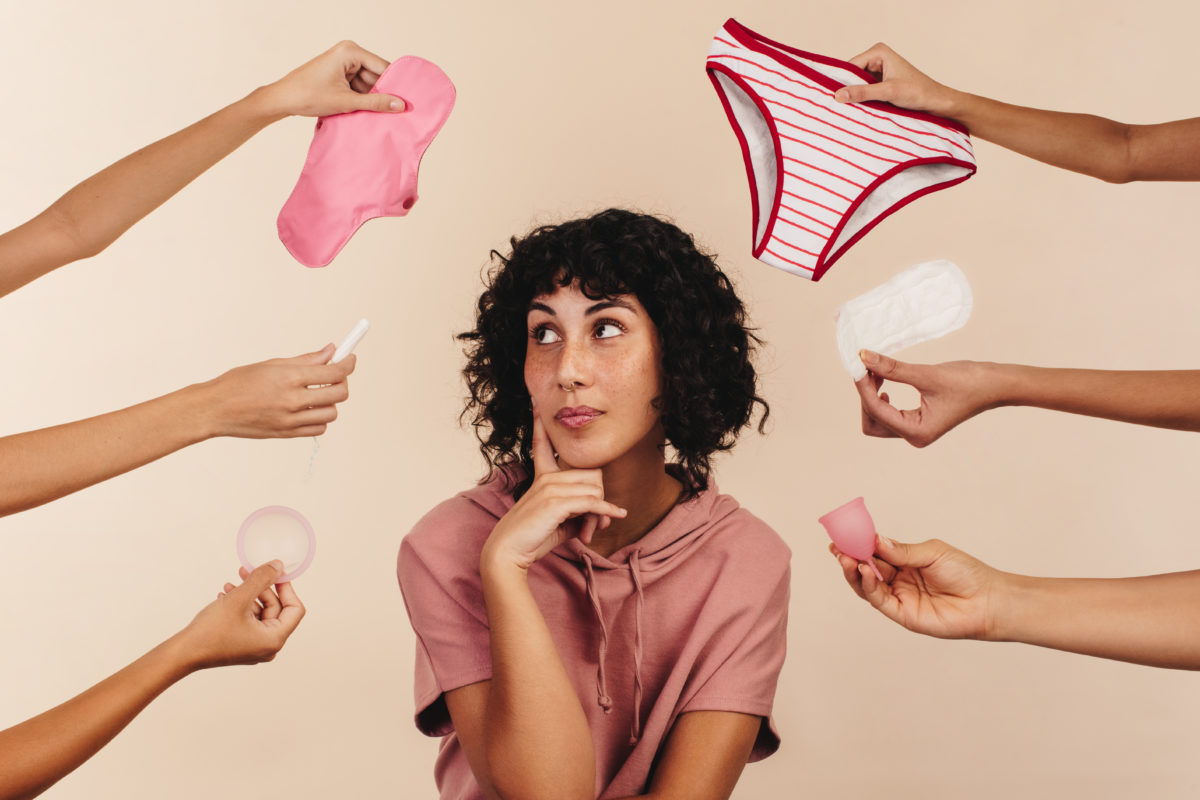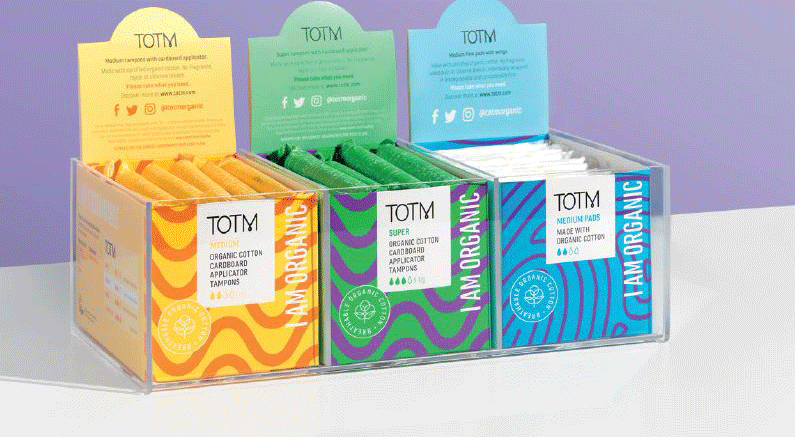Periods. They’ve been around for as long as we have. But if you think the idea of reusable menstrual products is a new one, think again.
Long before the invention of recognised period products like tampons and pads, the use of simple rags or cloths was standard. It was only during the Victorian era that menstrual products started to become available.
Since then, period products have predominantly been single use and disposable. In the UK alone, 4.3 billion disposable menstrual products are used every year. And that’s a lot of waste. In fact, the UK is said to create around 200,000 tonnes of it each year.
We use about 16,000 tampons and pads in our lifetime. Some of the worst culprits are single-use pads, which can contain up to 90% plastic due to their leak-proof base, along with synthetics which absorb moisture. On top of that, the average plastic tampon applicator can take hundreds of years to decompose.
With attentions turning to sustainable living, reusable coffee cups and second-hand fashion, many of us are looking for ways to make our time of the month greener, too.
And the good news is, this growing awareness of climate change is increasing the number of sustainable and reusable period products on the market.
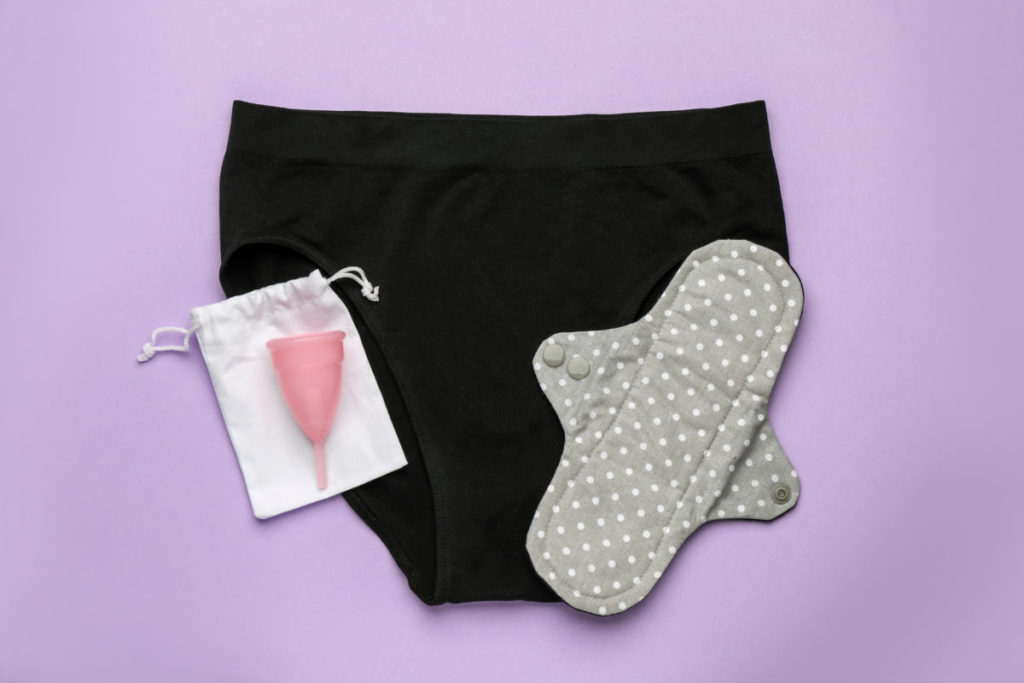
Reusable menstrual products are much more environmentally friendly, reducing plastic pollution, while also helping to prevent disposable products from being flushed down the toilet.
Along with the obvious benefits for the environment, reusable products will also help to save you money, with the initial outlay soon quickly recouped when calculated against the monthly cost of purchasing disposable products.
Here’s our guide for anyone considering making the switch from single-use products to more-sustainable, reusable alternatives.
Period underwear
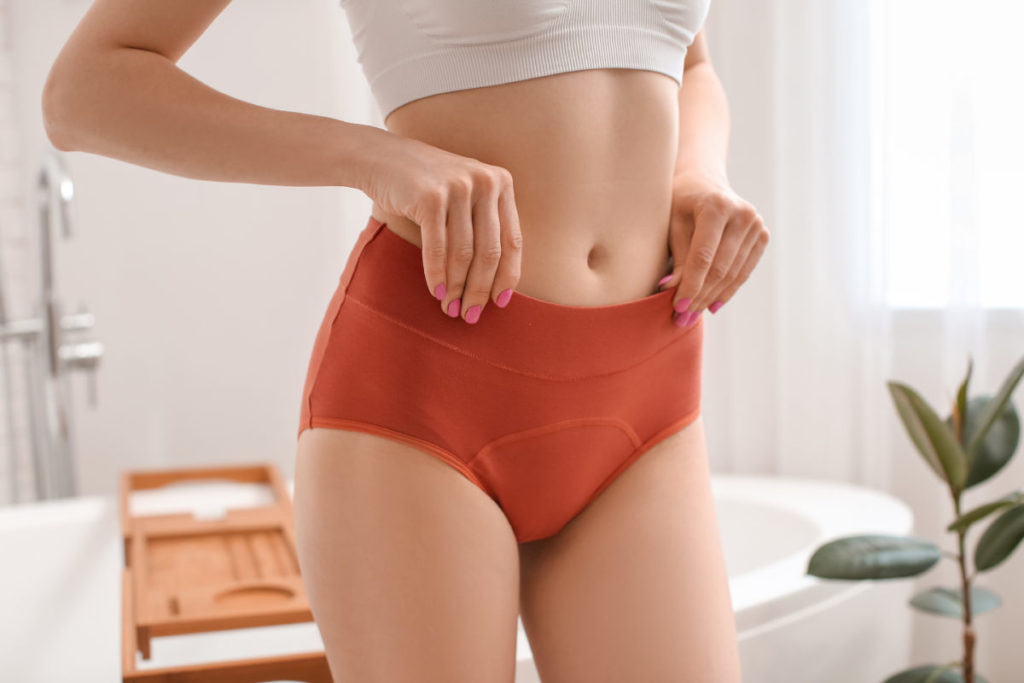 There was a time when the phrase ‘period pants’ would probably bring to mind your oldest, comfy pair of pants. Nowadays, it could just as easily refer to your newest knickers, as a growing number of stores and brands begin to introduce menstrual underwear.
There was a time when the phrase ‘period pants’ would probably bring to mind your oldest, comfy pair of pants. Nowadays, it could just as easily refer to your newest knickers, as a growing number of stores and brands begin to introduce menstrual underwear.
Designed to look and feel like your usual underwear, ranging from high waisted and bikini, to boxer-style shorts and even thongs, they can be worn in the knowledge that your flow will be absorbed. They have extra layers and highly absorbent fabrics, with wearers encouraged to experiment to discover the number of pairs they might need within a cycle, depending on their personal flow.
Once worn, they can be rinsed in cold water before going into the washing machine. It’s best to use a mild detergent and to let the underwear air-dry.
Reusable menstrual pads
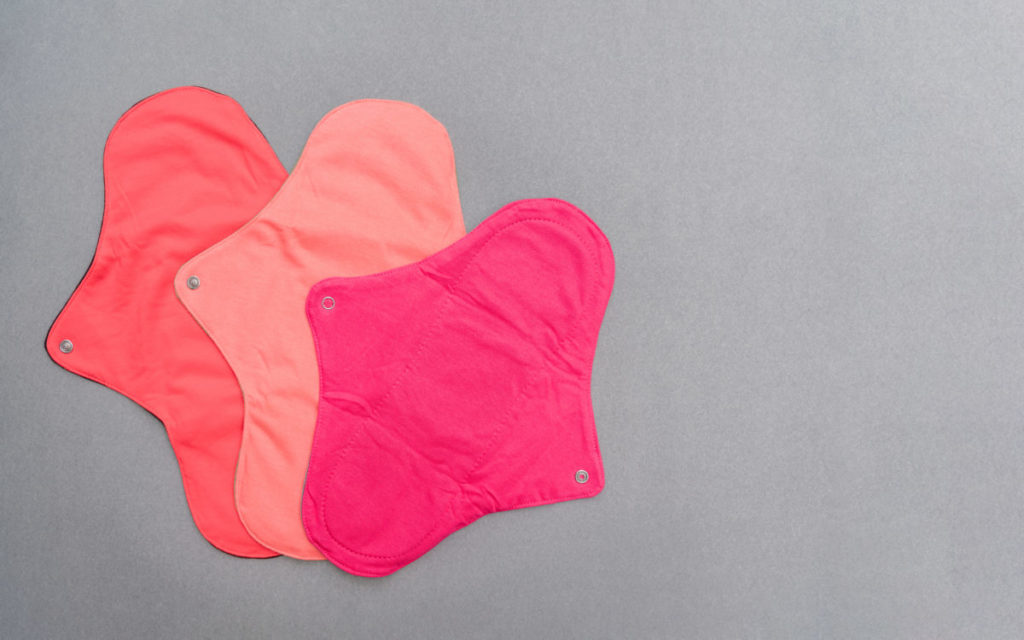 Cotton pads are a great option if you have sensitive skin or suffer with chafing as they don’t contain artificial fragrances or nasty chemicals. They’re super comfy – and each month you’ll know you have pads in your drawer ready to go.
Cotton pads are a great option if you have sensitive skin or suffer with chafing as they don’t contain artificial fragrances or nasty chemicals. They’re super comfy – and each month you’ll know you have pads in your drawer ready to go.
You wear reusable pads like you would wear disposables, but instead of fastening with the usual sticky strip or wings, these reusable cloth versions have a popper at each side to fasten snugly around the outside the gusset of your underwear. They can be cleaned and reused in much the same way as period pants.
Menstrual cups
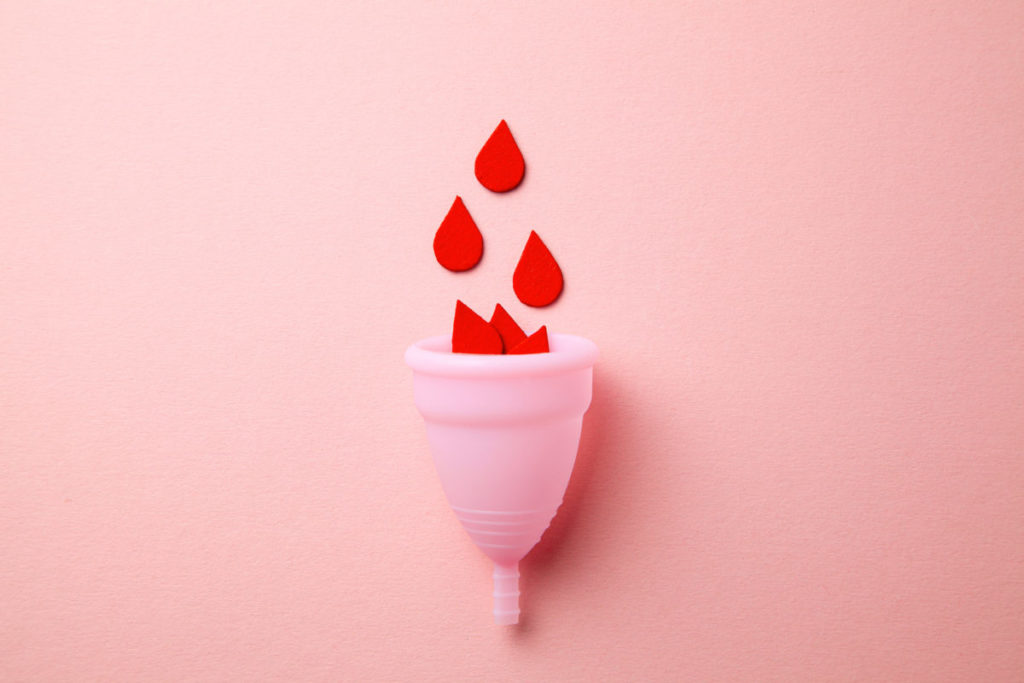
The very first menstrual cup (made from rubber) was launched in the mid-1930s, but there’s been a resurgence in the use of cups in recent years. Now, modern menstrual cups are made from medical grade silicone.
They are inserted to capture the menstrual flow and can be worn for several hours before being removed, emptied, washed with soap and water, and used again.
Their economic value has increased their popularity, as they can be used for several years. And as well as helping to reduce spending on single use products, they also help the environment in cutting the amount of waste going to landfill.
Eco-friendly products
If you’re not ready to make the switch and prefer to stick with single use tampons and pads, there are eco-friendly options available. A growing number of brands are shaking up the period industry by introducing environmentally friendly upgrades, with products, applicators or packaging which are biodegradable and recyclable.
Among them is UK based TOTM, an ethical brand which offers products made using natural and biodegradable materials. TOTM pads are made from organic cotton, making them naturally biodegradable and compostable, while TOTM applicator tampons are also made with sustainably sourced organic cotton, with a biodegradable cardboard applicator.
Period dignity
Besides the important environmentally friendly and sustainable element of period care, the cost of menstrual products is really important. Having a period creates the need to buy products, but the money needed by an individual to manage their period is an essential cost which is often overlooked.
Period products are not luxury items. They are essentials. But when finances are tight, it can be a struggle for some to find the cash to afford to pay for them.
Period poverty is defined as not being able to access sanitary products, usually due to the cost. People who experience period poverty are unable to purchase the menstrual products they need, and this in turn can lead them to feel anxious and more likely to avoid going to school, university or work.
At Teesside University, much is already being done to support period dignity, with free sanitary products on offer for students.
TOTM boxes, containing free tampons and pads made using natural and biodegradable materials to reduce waste, are available in toilets in The Library, Students’ Union, The Curve, Olympia and Student Life. These products are provided through funding secured by the University’s Student and Library Services department (SLS).
Free menstrual cups have also been offered to students across the School of Health & Life Sciences as part of a project to consider whether using a menstrual cup can be helpful in reducing the cost of periods. The aim is also to help students continue to attend campus to do their studies.
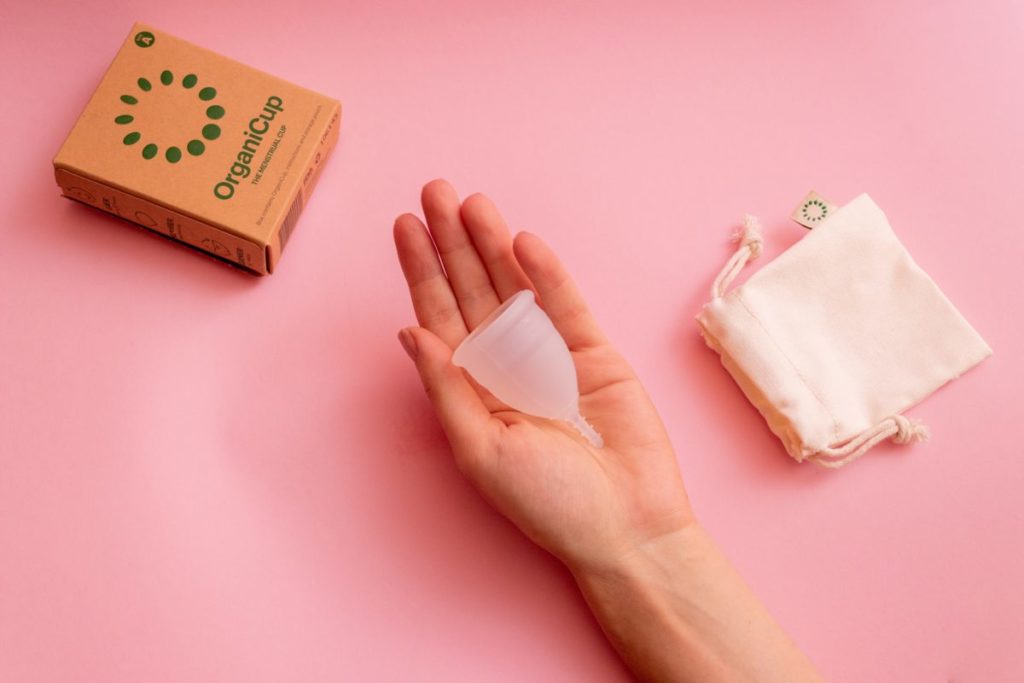
Vik Brown, Lifestyle Co-ordinator in SLS, who is involved in the projects, said the response from students about the availability of free sanitary products has been positive.
“We carried out a period dignity survey and those results showed that a high number of students feel their academic performance can be impacted by periods and that the availability of free products improves well-being.
“Many also said they it helped to improve their participation in sports, meant they were financially better off, and it is also helping with attendance,” said Vik.
School of Health & Life Science students wanting to find out more about the menstrual cup project can contact Vik at victoria.brown@tees.ac.uk.


